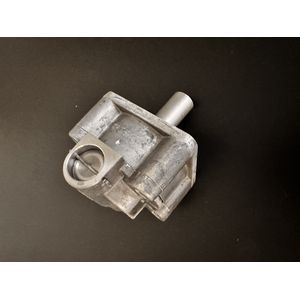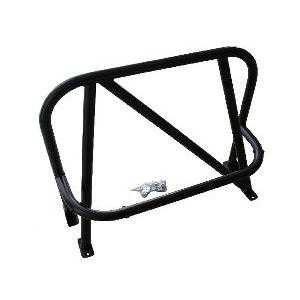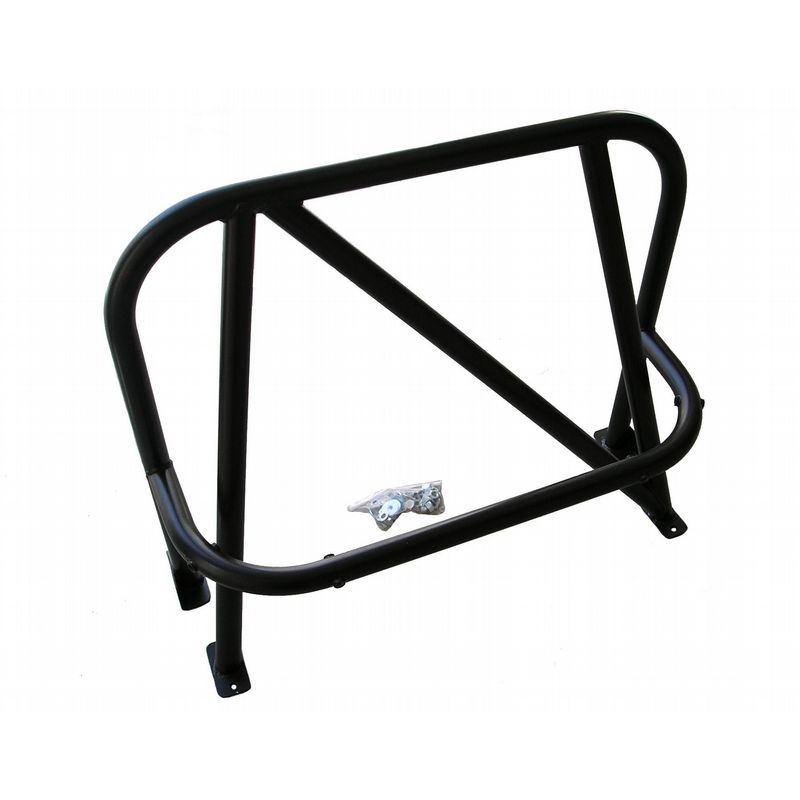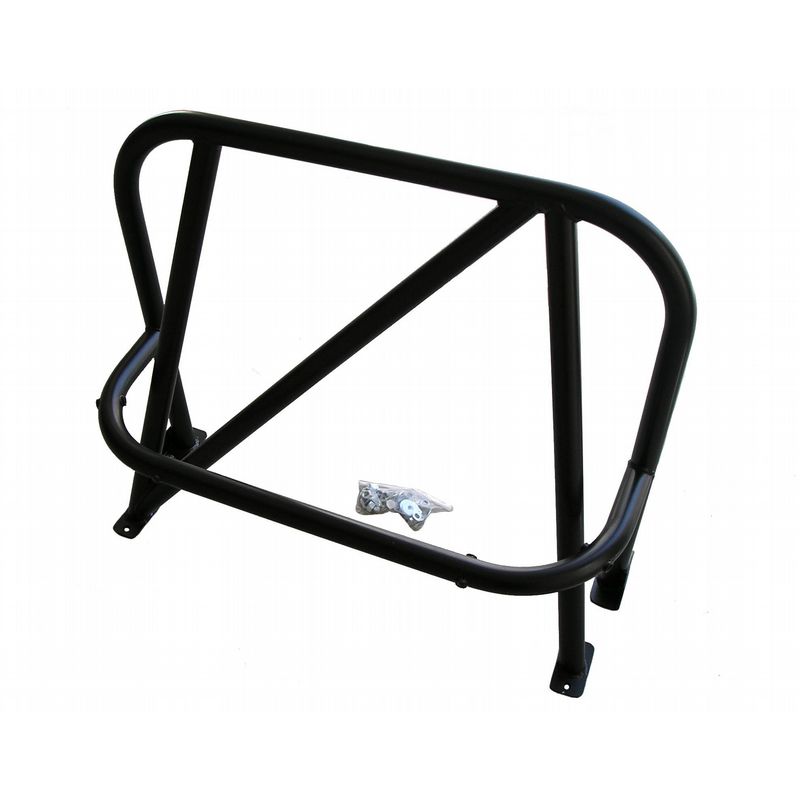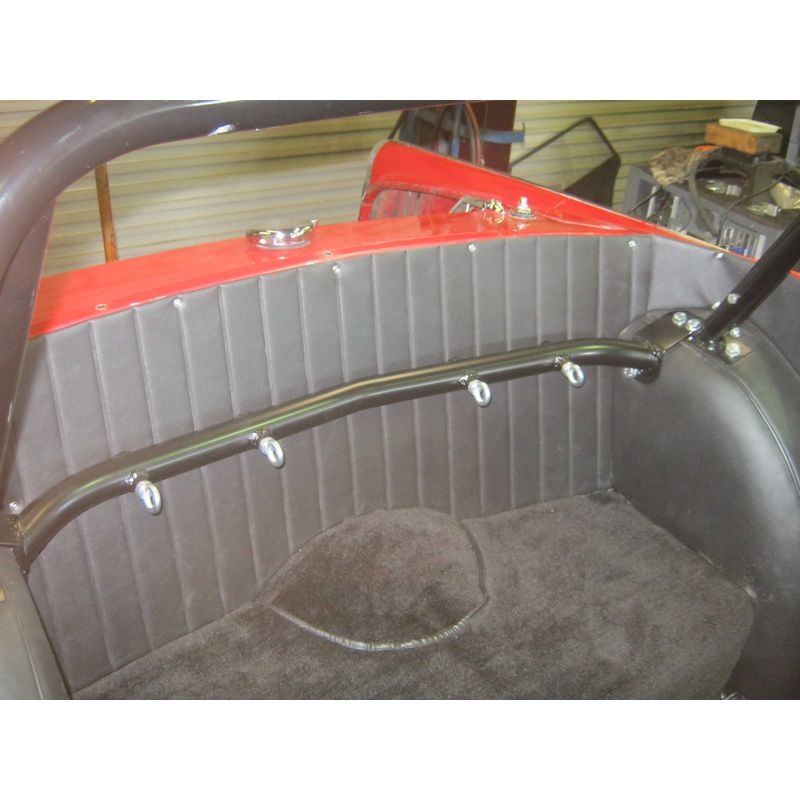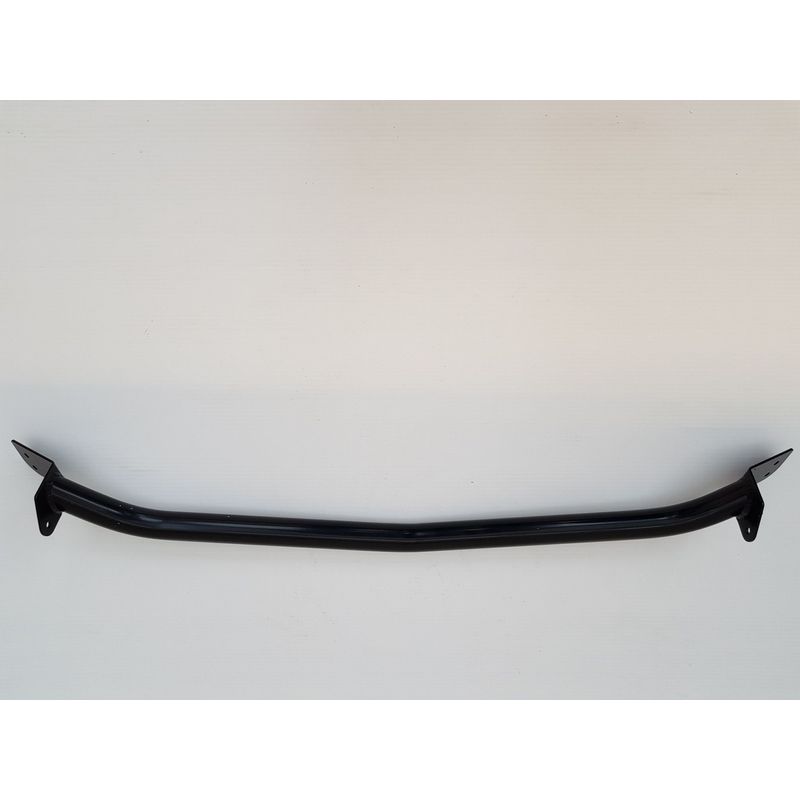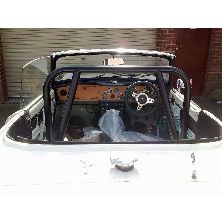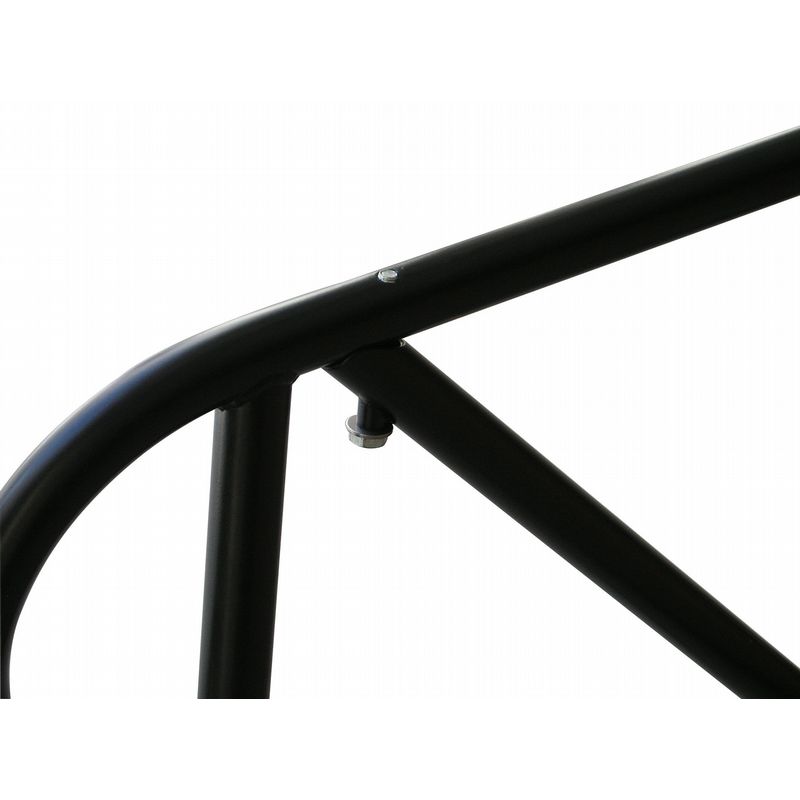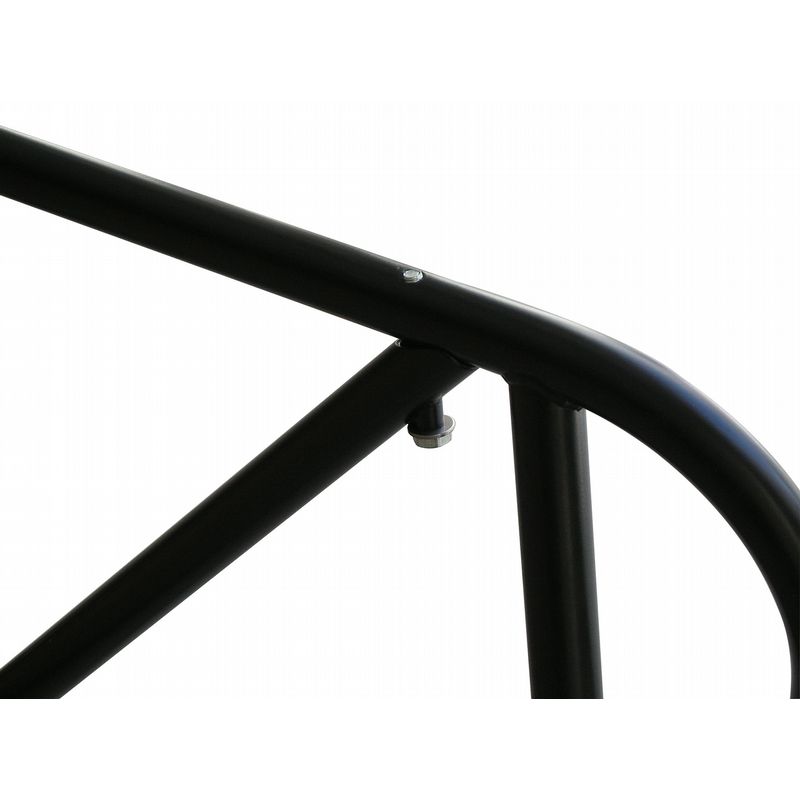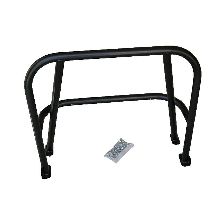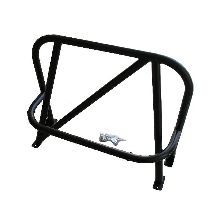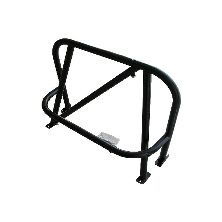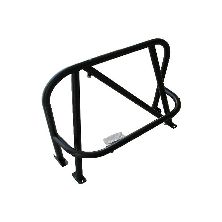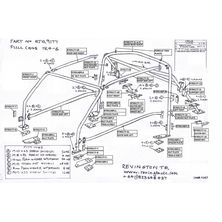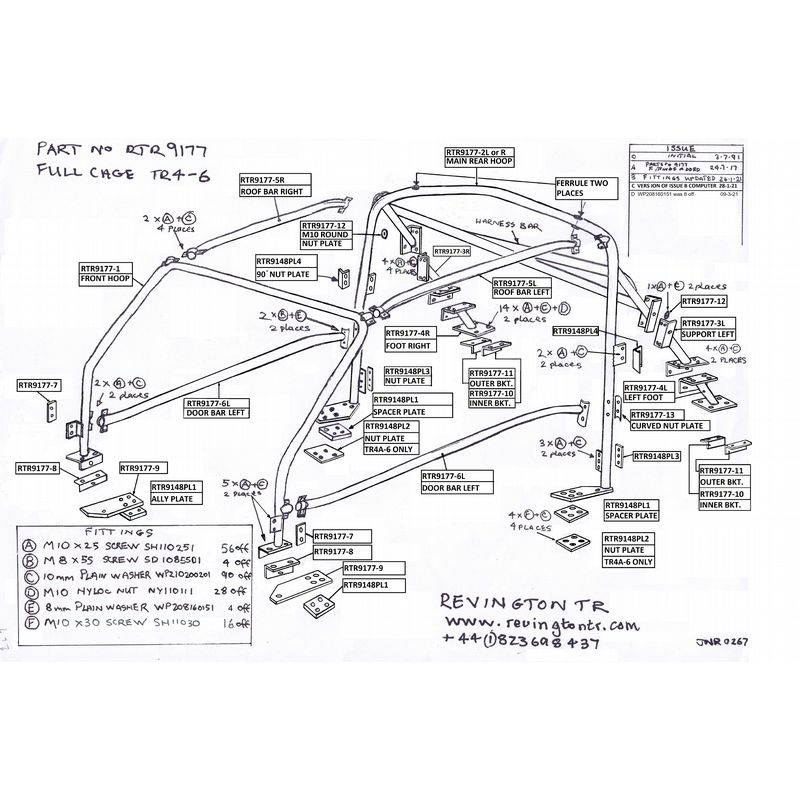- Kit Detail
- CLICK TO VIEW
TRIUMPH PLATES - Browse Original Triumph Catalogue Plates
ROB COMP TR4-6 FIXED DIAG + HARNESS BAR LHD

CURRENTLY UNAVAILABLE
TR4-6 Roll Over Bar (ROB) competition type for soft top and hard top cars with a fixed diagonal brace for Left Hand Drive (LHD) applications including a harness bar with ferrules for snap connection type full harnesses. This ROB is supplied to special order only
This ROB is supplied to special order only (which may incur a delivery delay) as our current preferred method of supplying a harness bar option is to offer a ROB with no harness bar and an additional stand alone harness bar RTR9148HB or HB-1. See below for these harness bars and suitable ROB's.
Revington TR's competition bars are designed for those who desire the extra rigidity of a diagonal brace for competition or track day use. The bars are handed so that the strongest point is above the drivers head, this ROB has a diagonal running from top left to bottom right. Customers who also use their car for general road use may be interested in our removable diagonal variation (RTR9053-3 series)
This ROB kit includes an integral harness bar, many owners, whether using their car on the road or the track, will find the use of a harness both comfortable and reassuring. If you have chosen to fit a ROB it is generally considered better that in the unfortunate event of the car rolling over it is preferable to be firmly strapped in. A full harness will achieve this with much greater effect then a lap and diagonal arrangement. It is important to note that this ROB will not interfere with the operation of the hood on soft top cars.
See Section 9 'SEAT BELTS' for suitable seat belts products of the harness variety.
This TR4-6 ROB sits entirely on the rear flat horizontal floor above the differential (sometimes called the parcel shelf). The ROB fits under the hood frame, allowing it to be raised and lowered, and fits under a hard top. There are 4 fixing positions and each position has provision for 2 M10 mounting screws. These are secured with Nyloc nuts below the floor through a spreader plate positioned below the floor. This method of fixing is adequate for all applications where the ROB is employed. Should further security be required with mountings onto the chassis, then a full cage should be used.
RevingtonTR Roll Over Protection (ROP) - The range
RevingtonTR supply a full range of ROP including Roll Over Bars (ROB) and Full Roll Cages for the complete TR range. All ROB's allow the hood to be folded and unfolded and a hard top to be fitted unless specified otherwise. The following descriptions are used to describe the style of bars in our range.
ROAD BARS have no diagonal brace and have the option, to special order only of an integral, transverse harness bar. (RTR9053-1HB).
COMPETITION BARS are supplied with fixed (RTR9053-2 series) or removable (RTR9053-3 series) diagonal brace, and have the option to special order only of a transverse harness bar.
Will this ROB give me adequate protection?
Neil Revington provides some insight: -
All ROB's in the RTR9053 series are attached to the rear floor and wheel arch bases as can be seen in the photographs. Whist there are bars available for soft top TR4-6 with a main hoop that attaches to the chassis, they impede seat and hood sticks movement in many cases.
All main mountings of our full cages are attached to the chassis. Yes, attaching all mountings to the chassis would be fundamentally better but by how much? What is most important is the data relating to accidents. Fitting any one of the ROP's in our range is a good idea, choosing the right one is a matter of personal choice of how much 'cotton wool' to wrap yourself in.
The results of the actual events highlighted below show that body mounted ROB's provide adequate protection; full cages are available for those that feel a cage is the solution for them.
The original concept of this type of design can be attributed to John Aley of Aley bars in the 1970's. A very early bar was fitted to John Welburn's black TR2 which he then rolled at Goodwood. There are photos of John, arms flaying as he rolled over and over. John walked away with no injuries. The bar was intact, the wheel arches dented but the bar nonetheless saved John life. A few year later Frank Richardson had a similar unfortunate roll in qualifying for a TR Register race. In this case, Frank was also thankfully OK, the wheel arches were not damaged and the car, after a few dents were knocked out, raced the next day.
Please Note: The various photographs available to view here show bars with and without harness bars and a diagonal brace for reference. The basic concept of the main hoop and backstays remains the same throughout the range.
All ROB's in the RTR9053 series are attached to the rear floor and wheel arch bases as can be seen in the photographs. Whist there are bars available for soft top TR4-6 with a main hoop that attaches to the chassis, they impede seat and hood sticks movement in many cases.
All main mountings of our full cages are attached to the chassis. Yes, attaching all mountings to the chassis would be fundamentally better but by how much? What is most important is the data relating to accidents. Fitting any one of the ROP's in our range is a good idea, choosing the right one is a matter of personal choice of how much 'cotton wool' to wrap yourself in.
The results of the actual events highlighted below show that body mounted ROB's provide adequate protection; full cages are available for those that feel a cage is the solution for them.
The original concept of this type of design can be attributed to John Aley of Aley bars in the 1970's. A very early bar was fitted to John Welburn's black TR2 which he then rolled at Goodwood. There are photos of John, arms flaying as he rolled over and over. John walked away with no injuries. The bar was intact, the wheel arches dented but the bar nonetheless saved John life. A few year later Frank Richardson had a similar unfortunate roll in qualifying for a TR Register race. In this case, Frank was also thankfully OK, the wheel arches were not damaged and the car, after a few dents were knocked out, raced the next day.
Fitting.
We do not provide fitting instructions with this ROP as in general it will fit in one ideal place. We do however offer a sheet of fitting tips, which can be downloaded via the 'Further Reading' tab above.

